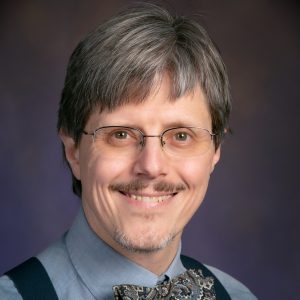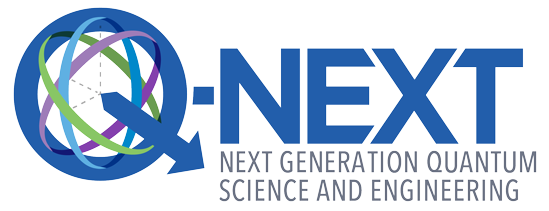by Paul Kwiat

The Q-NEXT Quantum Communication Thrust – consisting of world-leading researchers from eight institutions – is developing the full set of tools to enable the distribution and application of quantum resources between multiple nodes. Just as classical networks play a critical role in nearly all areas of information processing, from communication (Zoom, anyone?) to computing (cloud computation, for example) to sensing and metrology (a GPS satellite clock without communication is little better than space debris), quantum links that connect a network of operational nodes will enable a wealth of new QIS applications.
In communications, distributed quantum states enable encryption methods secure against eavesdropping that could otherwise threaten classical secret transfers. Additionally, entirely new protocols become possible, such as efficient quantum “fingerprinting” and quantum position verification.
In computing, an efficient quantum communication link enables both blind and distributed quantum processing. The former allows a client to remotely – and securely – run algorithms on a distant quantum computer server, while the latter can effectively join two separated processors to act as a single coherent device, resulting in exponentially more computing power than the two operating independently.
Finally, using distributed quantum states can enable enhanced sensitivity in such metrological applications as quantum-enhanced telescopes or synchronized atomic clocks.
Equal to the incredible promise of a large-scale quantum network is the challenge of creating one. The overall goal is to demonstrate a repeater-enabled quantum link that can outperform a repeaterless link, the first step toward a fully functional quantum internet. Members of the Quantum Communication Thrust are tackling problems at all levels of this challenge.
Researchers are working on enhanced single-photon and entanglement sources based on novel defect centers in silicon carbide (Stanford and HRL) and multiplexed photon pair generators (University of Illinois at Urbana-Champaign). Quantum memories based on rare-earth ion-doped materials (University of Chicago and Argonne) – including all-new materials (UIUC) – and photon-emitting “memory” qubits based on neutral rubidium atoms (University of Wisconsin–Madison) and strontium ions (UIUC) – will form the basis of future quantum repeater nodes that can purify and regenerate entanglement. Superconducting qubits (UChicago) will enable us to implement small-scale networks to better understand the underlying entanglement distillation and distributed processing protocols, and the development of quantum interconnects (Caltech, IBM and Stanford) to convert these various matter-based qubits to telecommunication photons will eventually enable links across much longer distances. In addition, we are developing the necessary classical control-plane architectures to coordinate and synchronize the quantum processes (Argonne). Finally, on the theory side (UChicago, UIUC) our goal is to develop new methods to characterize multiparty entanglement, to determine the minimal resources required to achieve a quantum advantage, and to develop new protocols and applications that can be implemented with our newly developed quantum hardware, even while informing the development of that hardware. To facilitate system engineering, we are modeling (UIUC), including optimization against noise and source impurity; more generally, we are simulating multinode quantum networks, including repeater technologies (HRL, Argonne).
Now starting our second year, the thrust holds weekly subthrust meetings and monthly all-hands meetings (open to all Q-NEXT members – email [email protected] for information). We have begun research in earnest, including acquiring advanced photon detectors, testing new materials, designing multiplexed sources, creating qubit technologies, fabricating photonic devices, and developing new metrics and protocols. The game is afoot!
Paul Kwiat of University of Illinois Urbana-Champaign leads the Q-NEXT Quantum Communication Thrust, along with deputy lead Liang Jiang of the University of Chicago and co-design engineer Thaddeus Ladd of HRL.
This work was supported by the DOE Office of Science National Quantum Information Science Research Centers.
